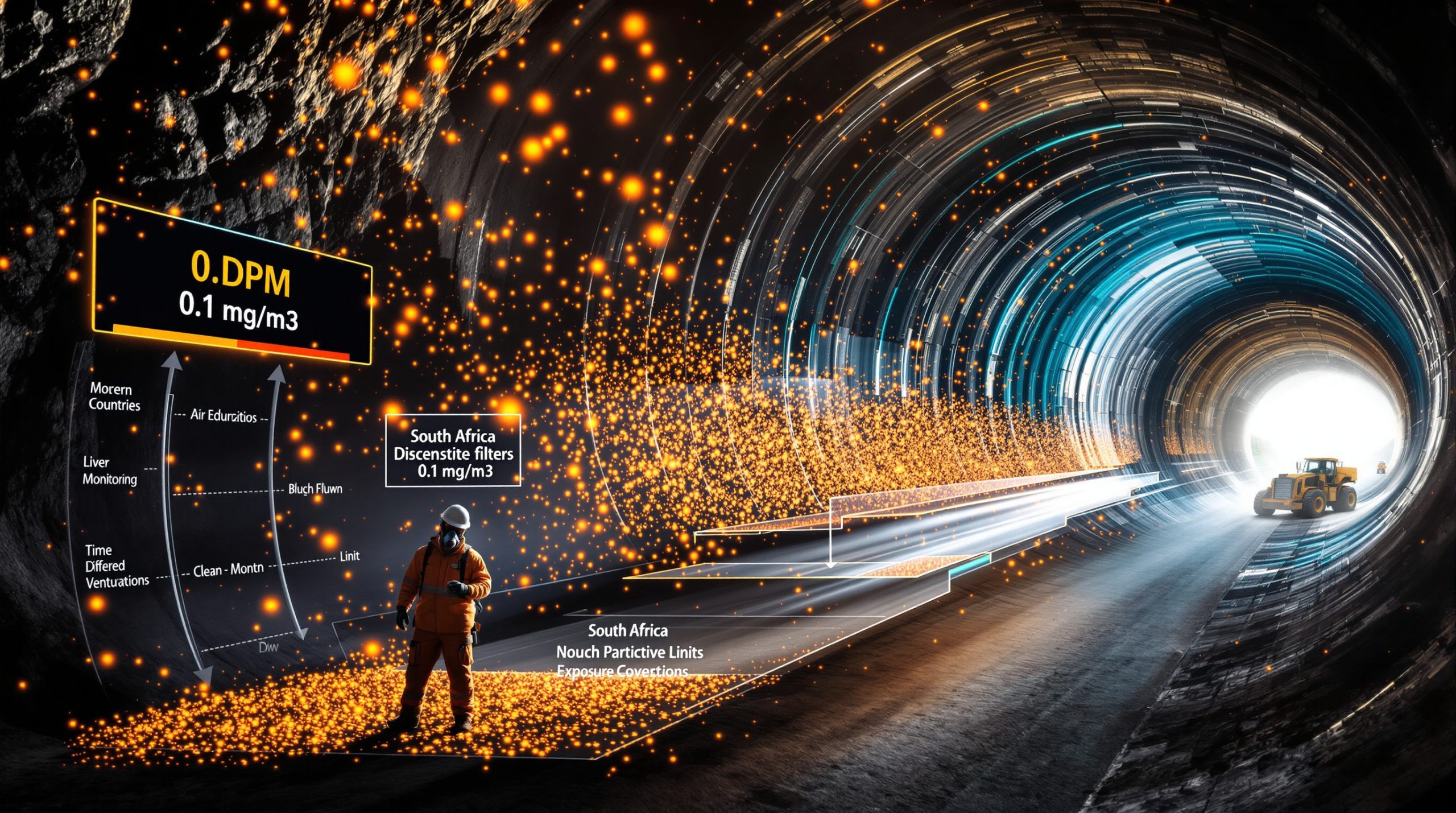What Are State Geological Surveys?
State geological surveys in the American West serve as the primary scientific organizations responsible for understanding, documenting, and communicating geological information within their respective states. These institutions form the backbone of state-level geological expertise, providing critical information to government agencies, private industry, and the public.
The Historical Foundation and Mission
Most state geological surveys in the American West have deep historical roots, established shortly after their territories achieved statehood. Washington's survey, for example, was founded in 1890, just one year after achieving statehood, and is now in its 135th year of operation with Casey Hanell serving as the 11th state geologist. California's survey dates even further back to 1860 during the gold rush era when Josiah Whitney became the first state geologist. Today, Jeremy Lancaster serves as California's 26th state geologist, continuing a long tradition of geological leadership.
As Casey Hanell explains: "The focus of the initial legislation that established our geological survey was on the geological resources of the state. So it's getting out and mapping understanding mineral resources, water resources, all the different aspects of geology and how it could inform what was available here in Washington as we were becoming a state."
These institutions were created primarily to map and understand the mineral exploration importance available within each state, supporting economic development through identification of mineral deposits, water resources, and other valuable geological assets. Oregon's current agency, the Department of Geology and Mineral Industries (DOGAMI), was established in 1937, reflecting the evolving needs of the state as it developed.
Evolution of Focus Over Time
While resource identification remains important, state geological surveys across the American West have significantly evolved their missions to address broader societal needs. As populations have grown and expanded into previously undeveloped areas, geological hazard assessment has become increasingly central to their work.
Modern surveys now balance traditional resource mapping with comprehensive hazard identification and monitoring programs. These include assessments of landslides, earthquakes, tsunamis, volcanic threats, and increasingly, post-wildfire geological hazards. This evolution reflects changing societal priorities and recognition of how geological processes directly impact public safety and economic stability.
The scope of western state geological surveys has expanded beyond simple mapping to include sophisticated monitoring networks, analytical services, and scientific advisory functions. This evolution has transformed these organizations from primarily resource-focused entities to multifaceted scientific institutions addressing complex geological challenges in an increasingly populated and developed western landscape.
How Are State Geological Surveys Structured?
The organizational structure of state geological surveys varies significantly across the American West, reflecting different state governance models, historical development patterns, and evolving mission priorities.
Organizational Placement Within State Government
State geological surveys occupy different positions within governmental structures across the American West, each reflecting unique state priorities and administrative frameworks:
Washington: "We're part of our state department of natural resources, which is led by an elected commissioner of public lands," explains Casey Hanell. This placement within a broader natural resources department with elected leadership creates a direct line of accountability to voters.
Oregon: The structure differs significantly from its northern neighbor. As Rory Day Streritz describes, "We are an executive agency of state government. So I report to a governing board appointed by the governor." This governing board model provides a buffer between the scientific work of the survey and direct political influence.
Idaho: Claudio Berthi notes Idaho's unique arrangement: "We are a state agency which is seated at the University of Idaho. We have two offices, one in Moscow, one in Boise." This academic positioning facilitates research collaboration while maintaining governmental functions.
California: "The California Geological Survey is a division within the Department of Conservation housed in the natural resources agency that's led by our secretary that is appointed by the governor," explains Jeremy Lancaster. This nested structure places the survey within multiple layers of governmental organization.
Staffing and Scale Variations
The size and staffing models of state geological surveys reflect significant differences in state populations, geological complexity, and funding priorities:
-
California maintains the largest operation with approximately 152 staff members plus 10-15 students, reflecting the state's size, geological complexity, and significant hazard exposure.
-
Washington employs between 60-70 personnel, with numbers fluctuating seasonally based on field work needs and project requirements.
-
Oregon has recently expanded to 41 staff with legislative approval to grow to 50 positions, demonstrating increased recognition of the survey's importance.
-
Idaho operates with a core staff of 11 funded through state appropriations, but leverages grants and contracts to effectively double their workforce to 20-25 total personnel.
These staffing differences directly impact the scope and scale of work each survey can undertake, creating both challenges and opportunities for inter-state collaboration on regional geological issues.
What Roles Do State Geologists Perform?
State geologists serve as the chief science officers for geological matters within their jurisdictions, balancing scientific leadership with administrative responsibilities and public communication duties.
Primary Responsibilities
As chief scientists for their states, state geologists oversee complex organizations addressing diverse geological issues. Their core responsibilities typically include:
- Directing geological mapping programs that document bedrock and surficial geology
- Overseeing hazard assessment and monitoring networks
- Managing resource evaluation initiatives for minerals, energy, and water
- Providing scientific guidance to state agencies and lawmakers
- Representing their state in multi-jurisdictional geological matters
Claudio Berthi describes Idaho's mandate: "Our agency is mandated to be the lead agency for the collection and dissemination interpretation of geologic data for the state of Idaho." This concise statement captures the fundamental information management role at the heart of all state geological surveys.
Regulatory vs. Non-Regulatory Functions
A significant distinction exists between surveys with regulatory authority and those functioning primarily as scientific organizations:
Washington and Oregon maintain regulatory oversight responsibilities. As Casey Hanell explains: "Our survey administers four different RCWs or laws in Washington, the surface mine reclamation act, metals mining and milling, geothermal exploration, and oil and gas."
Similarly, Rory Day Streritz notes: "I'm also the mining regulator for the state of Oregon. And so that's all surface mining, chemical process mining, oil and gas and geothermal drilling and exploration."
Idaho and California, by contrast, function as non-regulatory entities, focusing exclusively on scientific assessment and information dissemination. This allows them to maintain advisory relationships with regulatory agencies without direct enforcement responsibilities.
Scientific Advisory Capacity
Regardless of regulatory status, all state geological surveys serve as trusted scientific advisors on geological matters. They provide unbiased expertise to government agencies, private industry, and the public, helping inform policy decisions, land use planning, and resource management strategies across multiple sectors.
State geologists frequently testify before legislative committees, participate in multi-agency working groups, and provide scientific input on proposed regulations affecting geological resources or hazards. This advisory capacity requires maintaining scientific credibility while effectively communicating complex geological concepts to non-technical audiences.
How Do State Surveys Address Geological Hazards?
Geological hazard assessment and monitoring represents one of the most critical public safety functions of state geological surveys in the American West, where earthquakes, landslides, volcanoes, and other hazards pose significant risks.
Earthquake Risk Assessment
Earthquake hazard work varies dramatically by state, reflecting different risk profiles and resource availability:
California leads in seismic monitoring due to its significant earthquake risk. Jeremy Lancaster notes: "We have about 10,000 sensors throughout the state" for seismic monitoring. This extensive network reflects California's extraordinary seismic risk profile: "Our annualized earthquake losses are about $10 billion… about 66% of all of the annualized earthquake losses in the country."
Pacific Northwest states collaborate with federal partners like the United States Geological Survey and university networks to monitor seismic activity along the Cascadia Subduction Zone, which poses catastrophic earthquake and tsunami risks to coastal communities.
Idaho represents the dramatic resource disparity among western states. As Claudio Berthi observes: "They [California] have 10,000 seismic stations. We have 10." Despite limited resources, Idaho has responded to emerging seismic concerns: "We had a recent seismic activity in the Stanley area with some swarm going on which we have never monitored which we never observed before. So we were this summer deploying some temporary seismometers to collect those data."
Landslide Identification and Monitoring
Landslide hazard assessment has become increasingly important following tragic events that demonstrated the human cost of unrecognized geological hazards:
Washington significantly expanded its landslide program after the devastating 2014 Oso landslide disaster. Casey Hanell reveals the dramatic shift in resources: "The geological survey had I think half of a full-time employee dedicated to landslides prior to that landslide [Oso 2014]." This changed dramatically following the disaster that killed 43 people, with substantial increases in funding and staffing for landslide hazard assessment.
Oregon and California have developed robust landslide monitoring capabilities, particularly for post-wildfire debris flow assessment. These programs incorporate LiDAR mapping technology to identify potential landslide areas before development occurs, potentially preventing future disasters through informed land-use planning.
Post-Wildfire Hazard Response
Climate change has intensified wildfire impacts across the West, creating cascading geological hazards that require specialized assessment and response:
California has pioneered innovative approaches to post-wildfire geological hazards. Jeremy Lancaster explains: "We were able to propose a risk reduction adaptation strategy which was to stand up a post wildfire debris flow hazards team… we call it the watershed emergency response team." This team rapidly evaluates burn areas to identify potential debris flow paths that might threaten communities and infrastructure.
These watershed emergency response teams evaluate potential values at risk and support community risk reduction efforts. Their work represents a crucial adaptation strategy responding to increasingly severe fire seasons that create new and intensified geological hazards across the western landscape.
What Resource Assessment Work Do State Surveys Conduct?
While hazard assessment has gained prominence, resource evaluation remains a core function of state geological surveys, evolving to address changing economic and environmental priorities.
Critical Minerals Exploration
The growing demand for materials needed in renewable energy and technology sectors has revitalized mineral resource assessment work across western states:
Oregon has strategically repositioned its geological survey to address emerging resource priorities. As Rory Day Streritz explains: "We have critical mineral endowment. We have geological carbon sequestration opportunities. We have geothermal resources and increasingly interest in geological hydrogen with source rocks for hydrogen potential close to the surface."
Idaho, with its rich mining history, continues extensive work on mineral deposit tiers guide and identification. Claudio Berthi notes: "Energy and minerals is strong in Idaho and the new push for critical minerals has seen us quite busy." This reflects growing national concern about supply chain security for minerals essential to renewable energy technologies and other advanced manufacturing.
These efforts align with national security and economic development priorities while supporting the transition to clean energy technologies that require specialized mineral resources. State surveys provide crucial geological context for understanding mineral potential within their jurisdictions.
Energy Resource Evaluation
State surveys assess various energy resources within their boundaries, focusing increasingly on renewable and low-carbon options:
- Geothermal potential mapping in states like Oregon, Idaho, and California helps identify opportunities for this baseload renewable energy source
- Geological carbon sequestration assessment identifies formations suitable for long-term carbon dioxide storage
- Emerging interest in geological hydrogen potential represents a frontier in clean energy resource assessment
- Traditional fossil fuel resource evaluation continues in states with active production
These energy resource assessments help states develop comprehensive energy strategies based on their unique geological endowments. The expertise of state geological surveys proves essential for evaluating technical feasibility, potential environmental impacts, and economic viability of various energy development options.
Water Resource Assessment
Water remains perhaps the most critical resource throughout the American West, with state geological surveys providing essential information on groundwater systems:
- Groundwater mapping and aquifer characterization helps communities understand water availability
- Surface water/groundwater interaction studies inform sustainable water management
- Water quality assessment related to geological factors identifies natural contaminants
- Drought resilience planning through improved geological understanding supports adaptation to changing climate conditions
The geological context for water resources becomes increasingly important as western states face prolonged drought conditions, population growth, and changing precipitation patterns. State geological surveys provide the subsurface understanding necessary for sustainable water management.
How Do State Surveys Handle Emergency Response?
When geological disasters strike, state geological surveys play crucial roles in emergency response, providing scientific expertise and data collection capabilities that support effective crisis management.
Coordination With Emergency Management
During geological disasters, state surveys work closely with emergency management agencies, providing specialized scientific support:
- They collect perishable geological data immediately after events before evidence is disturbed
- Establish data clearinghouses to coordinate information collection among multiple scientific organizations
- Provide scientific expertise to emergency managers making critical response decisions
- Help combat misinformation through authoritative scientific communication
Casey Hanell emphasizes the importance of immediate data collection: "There's a lot of important perishable geological information to be observed and recorded immediately in the aftermath of an event." This information informs both immediate response actions and long-term recovery planning.
Field Deployment Protocols
All western state geological surveys maintain emergency response plans that activate during geological disasters:
- Staff deploy to disaster sites to gather critical scientific data
- They coordinate with external scientific partners from universities and federal agencies
- Information is centralized and disseminated through established channels
- Findings help inform both immediate response and long-term recovery efforts
As Casey Hanell notes: "We have an organizational structure that's able to take in people that come in from out of state or even in state or universities and help coordinate that information collection." This coordination prevents duplication of efforts and ensures comprehensive data collection under challenging field conditions.
Media Communication Strategies
Managing public information during geological emergencies requires careful coordination and pre-established credibility:
- State surveys typically work through governor's offices and emergency management for official communications
- They provide scientific expertise to help explain complex geological phenomena to the public
- Surveys work to establish credibility during non-emergency periods
Jeremy Lancaster emphasizes the importance of proactive communication: "I strongly believe it's important that a geoscience outfit like a state geological survey is actively communicating about the different hazards in the blue sky times to develop credibility." This established credibility becomes crucial during emergencies when the public needs trusted information sources.
What Challenges Do State Geological Surveys Face?
Despite their critical missions, state geological surveys in the American West confront significant operational challenges that affect their ability to fulfill their mandates effectively.
Funding Fluctuations and Uncertainty
State geological surveys face ongoing funding challenges that create operational instability:
- State budget constraints affect baseline operational funding
- Federal funding uncertainties complicate long-term planning
- Surveys often rely on a mix of state appropriations, federal grants, and fee-based services
Jeremy Lancaster highlights the budget challenges: "We've got about a 15% budgetary decline for all state agencies." He further notes the impact of federal funding uncertainty: "We have a lot of grants that we've applied for that are on hold right now and from a planning standpoint that really throws a wrench into things."
These funding fluctuations can threaten program continuity and institutional knowledge, making long-term planning difficult despite the inherently long-term nature of geological processes and hazards.
Workforce Development and Succession Planning
Maintaining specialized geological expertise presents ongoing challenges that require strategic workforce planning:
California faces a significant demographic transition. Jeremy Lancaster notes: "About a third of our workforce at CGS is coming of retirement age in the next 5 to 10 years… that's roughly 50 people." This represents an extraordinary knowledge transfer challenge for the organization.
Other western state geological surveys face similar, if smaller-scale, demographic transitions. Recruitment of qualified geologists with applied skills requires proactive strategies in a competitive hiring environment where private industry often offers higher compensation.
Universities are evolving their geology programs, sometimes reducing traditional field geology training that provides crucial skills for applied geological work. This creates a potential mismatch between academic preparation and the practical skills needed by state geological surveys.
Balancing Soft Money With Core Funding
Strategic financial management is essential for organizational stability, especially when balancing different funding sources:
- Surveys must carefully balance grant-funded positions with stable core-funded roles
- Overreliance on "soft money" creates organizational vulnerability when funding priorities shift
- Strategic growth requires maintaining solid baseline funding while leveraging external opportunities
Rory Day Streritz describes this challenge: "That careful balance between the hard appropriation from the state with that soft money leverage… it's a question of trying to balance that over a two, four, six year cycle and not overreach on soft money." This balancing act requires sophisticated financial planning and careful risk management to maintain organizational stability.
How Are State Surveys Evolving?
State geological surveys across the American West are undergoing significant transformation to meet changing societal needs, technological opportunities, and emerging geological challenges.
Technological Transformation
Modern geological surveys increasingly leverage advanced technologies that dramatically enhance their capabilities:
- LiDAR data acquisition provides high-resolution terrain mapping that reveals subtle geological features previously invisible to traditional mapping techniques
- Remote sensing applications support broad-scale resource and hazard assessment
- Digital data management systems improve accessibility for both technical and public users
- Advanced 3D geological modelling techniques enhance hazard prediction and resource evaluation accuracy
These technological advances allow state geological surveys to accomplish more with limited resources, improving both the quality and accessibility of geological information they provide to stakeholders.
Strategic Repositioning
Some surveys are strategically shifting their focus areas to address emerging priorities:
Oregon has expanded beyond traditional hazard work to emphasize critical minerals and carbon sequestration opportunities. This repositioning aligns with both economic development goals and climate action priorities.
Washington has significantly enhanced its landslide hazard program following the
Ready to Stay Ahead of Major ASX Mineral Discoveries?
Gain instant access to significant mineral discovery announcements on the ASX through Discovery Alert's proprietary Discovery IQ model, which transforms complex geological data into actionable investment insights. Explore why major mineral discoveries can lead to exceptional returns by visiting Discovery Alert's dedicated discoveries page and begin your 30-day free trial today.




